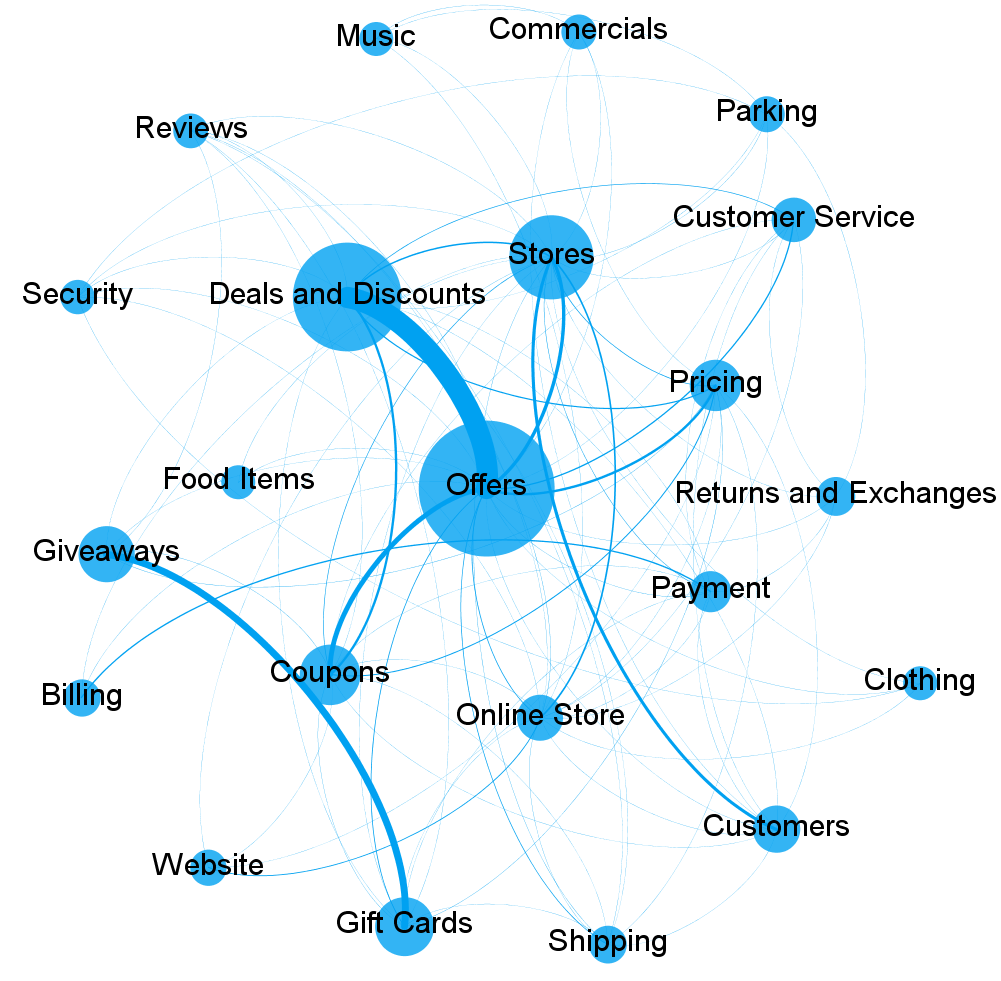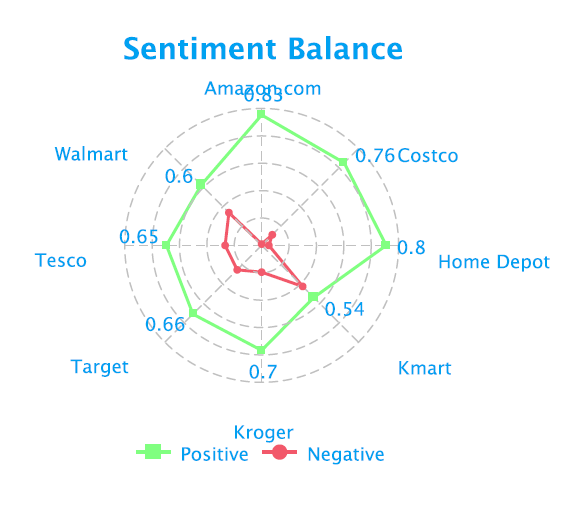Retail Social Media Analytics (Part II)

E-Retailers: Understand your brand through retail social media analytics
As the world wide web has evolved, so has shopping. Social media has offered retail players the opportunity to form an association with thousands of customers and also engage with them personally. With more and more people shopping and spending online, retail sales have seen a considerable jump in the past one year. Retail sector has truly acted in accordance with demands of social age with nearly every brand having some kind of online presence whether it’s a Facebook page, a Pinterest board or a Twitter handle. Brands might be drawing attention from thousands of people on the web to their social page, but people ‘liking’ or ‘pinning’ doesn’t actually indicate if they’re really purchasing which is the ultimate motive of brands for creating their online presence. Thus, brands need to strategize their online presence in a manner which ultimately leads to consumers augmented desire for products which in turn push their sales.
Various social media platforms have shown varying levels of success in terms of leading traffic to brand’s site, depending to a large extent the way numerous social media’s are used by online shoppers across retail categories. For example, YouTube’s influence was most visible in the beauty and skincare category whereas Facebook’s effectiveness was observed in the watches and jewelry retail category driving high traffic.
Social media thus effectively opens up communication between businesses with its customer base. The advantage of starting a direct line of contact helps in making customers feel themselves as part of a brand. Social media aids consumers to express their opinions and people like to voice out when they’re dissatisfied apart from while expressing suggestions towards the betterment of a brand. By listening to customers, brands can alter their products and offerings so as to meet their customers’ demands thereby enhancing probability of their products getting sold more. It can as well carve a totally new avenue of generating revenue if customer suggestions lead to an inventive new product or service.
To showcase the real impact, Fusion Analytics World now analyzes the sentiments flowing around online retailers.
1. Sentiment Balance:
Sentiment balance shows the proportionate balance of positive and negative sentiments expressed in conversations from social media. Fusion Analytics World automatically categorizes data under positive, negative and neutral sentiment using advanced text analysis and natural language processing.
The chart clearly indicates that Amazon.com has the best sentiment balance followed by Home Depot and Costco. Positive sentiments for Amazon.com is the highest whereas its negative sentiments are almost nil, Home Depot has the next best sentiment balance with very low negative sentiments in comparison to its healthy positive sentiment score.
Kmart with high volume and high negative sentiment indicates most of the conversations are not what their PR and Marketing teams would like to see. Insights like these help brands take immediate actions before things go out of control, especially by knowing the topics of discussion elaborated in the next section.
2. Understanding the Conversation Map:
The Fusion Analytics World analysis goes deeper into the data to understand through conversation map about what customers talk on social media. For the e-retailers, bubble shows the size of each conversation topic, and lines connecting the bubbles show how frequently these different topics were discussed together on the same mention (i.e., tweets or blogs etc). –
Offers, Deals & Discounts, Stores, Coupons, Giveaways, Gift Cards, Pricing and Customer Service were the few top conversation topics around the online retailers. Amongst them Offers with Deals & Discounts followed by Gift Cards with Giveaways were the most discussed topics on the same mention. Understanding relative proportions of discussions with the help of above visualizations can help marketers’ device appropriate promotions. For example understanding that discussions around Reviews is 2 times more popular than Website, Shipping discussions are way more popular than Returns and Exchanges etc., can help in leveraging appropriate topics for their next marketing campaign.
3. Understanding the positive and negative topics 
To identify the causes responsible, we have used advanced deep text analytic techniques to identify the common negative themes present in these mentions. Image above shows a word cloud of the most common positive and negative themes present in mentions for online retailers.
The top negative themes emerging from the above analysis for e-retailers are regarding their deadly factory and overall unsatisfactory experiences. It looks like their customers are not really enjoying these as much as E-Retailers would want them to. Looking further, we also find that people are showing displeasure about scandals, customer service issues, online payment frauds, delivery issues, problematic retailer etc. The key positive mentions are regarding streaming service, casual dresses, buying uniform and gift cards, on-demand films, good store managers and so on.

Kalyan Banga226 Posts
I am Kalyan Banga, a Post Graduate in Business Analytics from Indian Institute of Management (IIM) Calcutta, a premier management institute, ranked best B-School in Asia in FT Masters management global rankings. I have spent 14 years in field of Research & Analytics.












1 Comment
Frank
January 3, 2017 at 8:40 amThese are actually enormous ideas in about blogging.
You have touched some pleasant points here. Any way keep up wrinting.